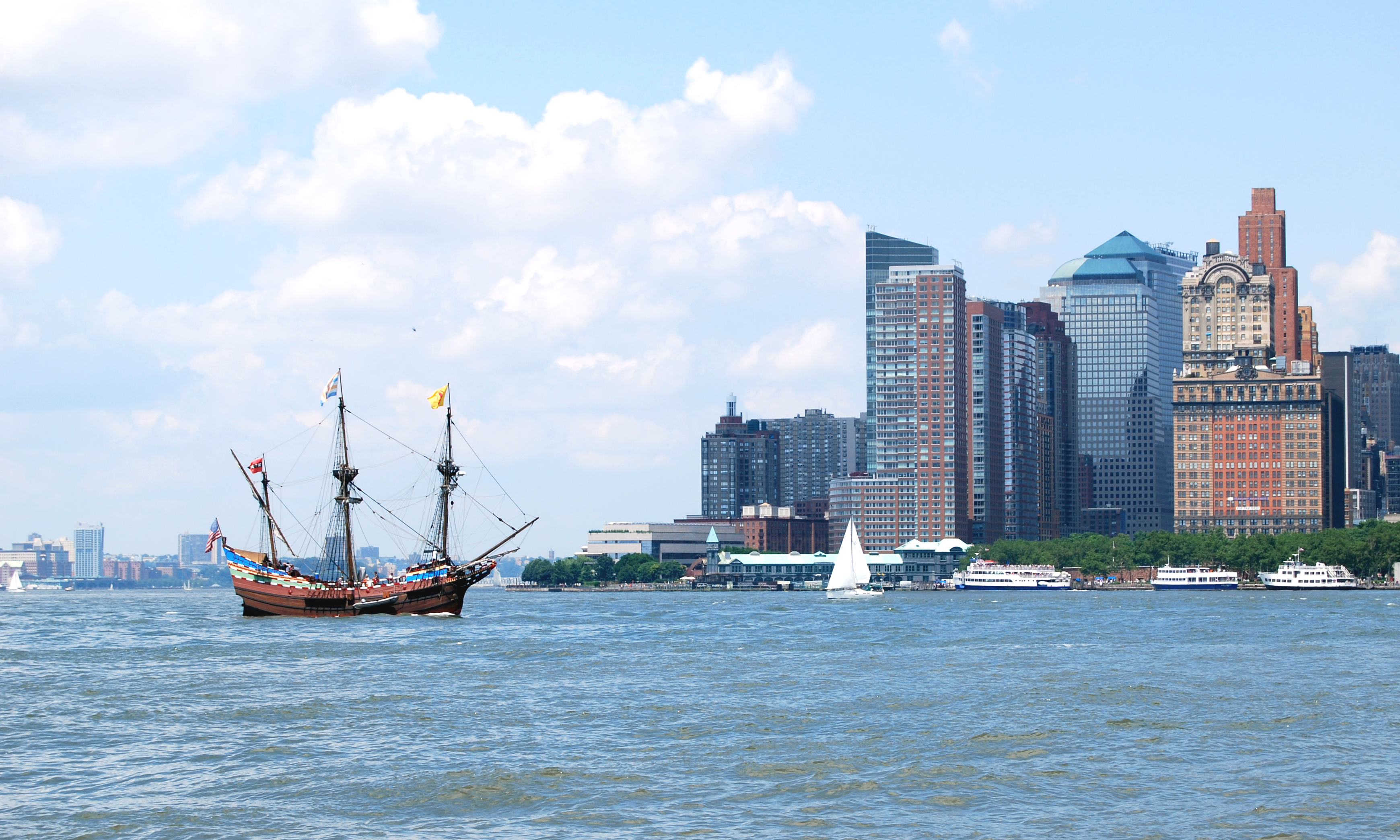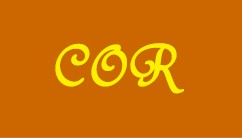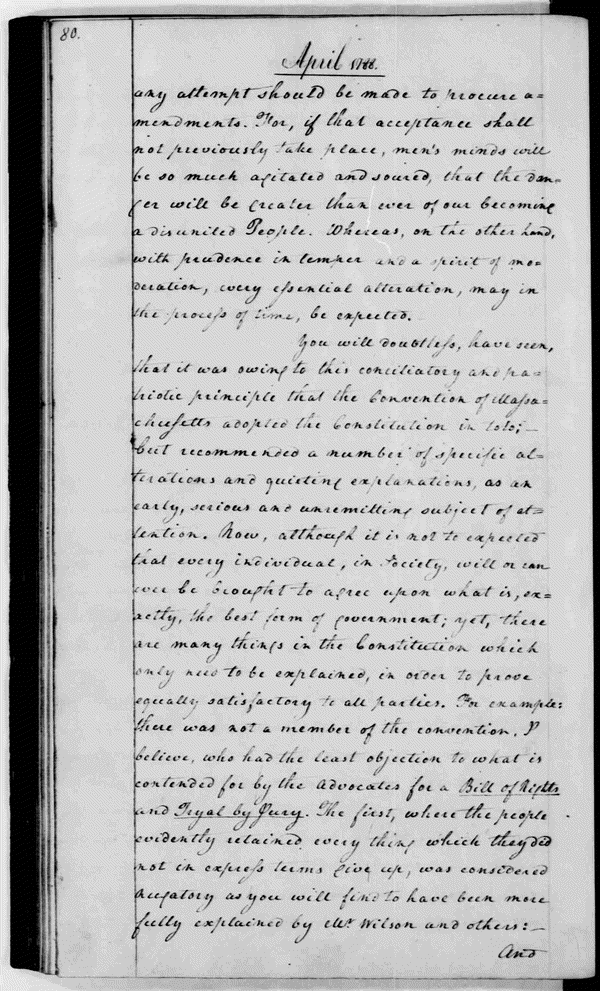|
History Of New York (state)
The history of New York begins around 10,000 B.C. when the first people arrived. By 1100 A.D. two main cultures had become dominant as the Iroquois, Iroquoian and Algonquian peoples, Algonquian developed. European discovery of New York was led by Giovanni da Verrazzano in 1524 followed by the first land claim in 1609 by the Dutch Republic, Dutch. As part of New Netherland, the colony was important in the fur trade and eventually became an agriculture, agricultural resource thanks to the patroon, patroon system. In 1626, the Dutch thought they had bought the island of Manhattan from Native Americans. In 1664, Kingdom of England, England renamed the colony New York, after the James II of England, Duke of York and Albany, brother of Charles II of England, King Charles II. New York City gained prominence in the 18th century as a major trading port in the Thirteen Colonies. New York (state), New York played a pivotal role during the American Revolution and subsequent American Revol ... [...More Info...] [...Related Items...] OR: [Wikipedia] [Google] [Baidu] |
Fenimore Art Museum
The Fenimore Art Museum (formerly known as New York State Historical Association) is a museum located in Cooperstown, New York, Cooperstown, New York (state), New York on the west side of Otsego Lake (New York), Otsego Lake. Collection strengths include the Eugene V. Thaw, Eugene and Clare Thaw Collection of American Indian Art, American fine and folk art, 19th and early 20th century photography, as well as rare books and manuscripts. The museum's mission is to connect its audience to American and New York State cultural heritage by organizing exhibits and public programs that "engage, delight and inspire." The house organ was titled ''Heritage''. The Fenimore Art Museum is closely associated with The Fenimore Farm & Country Village, also in Cooperstown. History Fenimore Art Museum was founded in 1899 as the New York State Historical Association. In 1925–1926, industrialist Horace Moses built a replica of Hancock Manor, the Thomas Hancock House in Boston in Ticonderoga, New ... [...More Info...] [...Related Items...] OR: [Wikipedia] [Google] [Baidu] |
American Revolutionary War
The American Revolutionary War (April 19, 1775 – September 3, 1783), also known as the Revolutionary War or American War of Independence, was the armed conflict that comprised the final eight years of the broader American Revolution, in which American Patriot (American Revolution), Patriot forces organized as the Continental Army and commanded by George Washington defeated the British Army during the American Revolutionary War, British Army. The conflict was fought in North America, the Caribbean, and the Atlantic Ocean. The war's outcome seemed uncertain for most of the war. However, Washington and the Continental Army's decisive victory in the Siege of Yorktown in 1781 led King George III and the Kingdom of Great Britain to negotiate an end to the war in the Treaty of Paris (1783), Treaty of Paris two years later, in 1783, in which the British monarchy acknowledged the independence of the Thirteen Colonies, leading to the establishment of the United States as an independent and ... [...More Info...] [...Related Items...] OR: [Wikipedia] [Google] [Baidu] |
History Of Rail Transport In The United States
Railroads played a large role in the development of the United States from the Industrial Revolution in the Northeast (1820s–1850s) to the settlement of the West (1850s–1890s). The American railroad mania began with the founding of the first passenger and freight line in the country, the Baltimore and Ohio Railroad, in 1827, and the "Laying of the First Stone" ceremonies and the beginning of its long construction heading westward over the obstacles of the Appalachian Mountains eastern chain in the next year. It flourished with continuous railway building projects for the next 45 years until the financial Panic of 1873, followed by a major economic depression, that bankrupted many companies and temporarily stymied and ended growth. Railroads not only increased the speed of transport, they also dramatically lowered its cost. The first transcontinental railroad resulted in passengers and freight being able to cross the country in a matter of days instead of months and at one te ... [...More Info...] [...Related Items...] OR: [Wikipedia] [Google] [Baidu] |
Erie Canal
The Erie Canal is a historic canal in upstate New York that runs east–west between the Hudson River and Lake Erie. Completed in 1825, the canal was the first navigability, navigable waterway connecting the Atlantic Ocean to the Great Lakes, vastly reducing the costs of transporting people and goods across the Appalachians. The Erie Canal accelerated the settlement of the Great Lakes region, the westward expansion of the United States, and the economic ascendancy of New York (state), New York state. It has been called "The Nation's First Superhighway". A canal from the Hudson River to the Great Lakes was first proposed in the 1780s, but a formal survey was not conducted until 1808. The New York State Legislature authorized construction in 1817. Political opponents of the canal (referencing its lead supporter New York Governor DeWitt Clinton) denigrated the project as "Clinton's Folly" and "Clinton's Big Ditch". Nonetheless, the canal saw quick success upon opening on October ... [...More Info...] [...Related Items...] OR: [Wikipedia] [Google] [Baidu] |
Steamboat
A steamboat is a boat that is marine propulsion, propelled primarily by marine steam engine, steam power, typically driving propellers or Paddle steamer, paddlewheels. The term ''steamboat'' is used to refer to small steam-powered vessels working on lakes, rivers, and in short-sea shipping. The development of the steamboat led to the larger steamship, which is a seaworthy and often ocean-going ship. Steamboats sometimes use the ship prefix, prefix designation SS, S.S. or S/S (for 'Screw Steamer') or PS (for 'Paddle Steamer'); however, these designations are most often used for steamships. Background Limitations of the Newcomen steam engine The first steamboat designs used Newcomen atmospheric engine, Newcomen steam engines. These engines were large, heavy, and produced little power, which resulted in an unfavorable power-to-weight ratio. The heavy weight of the Newcomen engine required a structurally strong boat, and the reciprocating motion of the engine beam required a compli ... [...More Info...] [...Related Items...] OR: [Wikipedia] [Google] [Baidu] |
List Of Capitals In The United States
This is a list of Capital city, capital cities of the United States, including places that serve or have served as federal, state, insular area, territorial, colonial and Native American capitals. Washington, D.C. has been the federal capital of the United States since 1800. Each U.S. state has its own capital city, as do many of its insular areas. Most states have not changed their capital city since becoming a state, but the capital cities of their respective preceding colonies, territories, kingdoms, and republics typically changed multiple times. There have also been other governments within the current borders of the United States with their own capitals, such as the Republic of Texas, Native American nations, and other unrecognized governments. National capitals The buildings in cities identified in the chart below served either as official capitals of the United States under the Constitution of the United States, United States Constitution, or, prior to its ratif ... [...More Info...] [...Related Items...] OR: [Wikipedia] [Google] [Baidu] |
Albany, New York
Albany ( ) is the List of capitals in the United States, capital city of the U.S. state of New York (state), New York. It is located on the west bank of the Hudson River, about south of its confluence with the Mohawk River. Albany is the oldest city in New York, and the county seat of and most populous city in Albany County, New York, Albany County. Albany's population was 99,224 at the 2020 United States census, 2020 census and estimated at 101,228 in 2023. The city is the economic and cultural core of New York State's Capital District (New York), Capital District, a metropolitan area including the nearby cities and suburbs of Colonie, New York, Colonie, Troy, New York, Troy, Schenectady, New York, Schenectady, and Saratoga Springs, New York, Saratoga Springs. With a population of 1.23 million in 2020, the Capital District is the third-most populous metropolitan region in the state. The Hudson River area was originally inhabited by Algonquian languages, Algonquian-speaking Mo ... [...More Info...] [...Related Items...] OR: [Wikipedia] [Google] [Baidu] |
United States Bill Of Rights
The United States Bill of Rights comprises the first ten list of amendments to the United States Constitution, amendments to the United States Constitution. It was proposed following the often bitter 1787–88 debate over the Timeline of drafting and ratification of the United States Constitution, ratification of the Constitution and written to address the objections raised by Anti-Federalism, Anti-Federalists. The amendments of the Bill of Rights add to the Constitution specific guarantees of personal freedoms, such as Freedom of speech in the United States, freedom of speech, the Freedom of the press in the United States, right to publish, Freedom of religion in the United States, practice religion, Right to keep and bear arms in the United States, possess firearms, Right to assemble, to assemble, and other natural and legal rights. Its clear limitations on the government's power in judicial and other proceedings include explicit declarations that all powers not specificall ... [...More Info...] [...Related Items...] OR: [Wikipedia] [Google] [Baidu] |
United States Constitution
The Constitution of the United States is the Supremacy Clause, supreme law of the United States, United States of America. It superseded the Articles of Confederation, the nation's first constitution, on March 4, 1789. Originally including seven articles, the Constitution delineates the frame of the Federal government of the United States, federal government. The Constitution's first three articles embody the doctrine of the separation of powers, in which the federal government is divided into three branches: the United States Congress, legislative, consisting of the bicameralism, bicameral Congress (Article One of the United States Constitution, Article I); the Federal government of the United States#Executive branch, executive, consisting of the President of the United States, president and subordinate officers (Article Two of the United States Constitution, Article II); and the Federal judiciary of the United States, judicial, consisting of the Supreme Court of the Unit ... [...More Info...] [...Related Items...] OR: [Wikipedia] [Google] [Baidu] |
New York Constitution
The Constitution of the State of New York establishes the structure of the government of the State of New York, and enumerates the basic rights of the citizens of New York. Like most state constitutions in the United States, New York's constitution's provisions tend to be more detailed and amended more often than its federal counterpart. Because the history of the state constitution differs from the federal constitution, the New York Court of Appeals has seen fit to interpret analogous provisions differently from United States Supreme Court's interpretation of federal provisions. Constitutional Conventions The State of New York has held nine Constitutional Conventions: in 1776–1777, 1801, 1821, 1846, 1867–1868, 1894, 1915, 1938, and 1967; a Constitutional Commission in 1872–1873; and a Judicial Convention in 1921. Despite this, the state has had only four essentially '' de novo'' constitutions in its history, those of 1777 (replacing the former colonial charter), 1821, ... [...More Info...] [...Related Items...] OR: [Wikipedia] [Google] [Baidu] |
Battle Of Saratoga
The Battles of Saratoga (September 19 and October 7, 1777) were two battles between the American Continental Army and the British Army fought near Saratoga, New York, concluding the Saratoga campaign in the American Revolutionary War. The Battles of Saratoga#Second Saratoga: Battle of Bemis Heights (October 7), second battle ended with a decisive History of the United States (1776–1789), American victory, greatly affecting the course of the conflict and persuading Kingdom of France, France to Franco-American alliance, enter the war as an American ally. In both battles, General John Burgoyne commanded the British forces, while General Horatio Gates led the American force. Historian Edmund Morgan (historian), Edmund Morgan described Saratoga as "a great turning point of the war because it won for Americans the foreign assistance which was the last element needed for victory." Intending to divide New England from the Southern Colonies, southern colonies, Burgoyne led an invasion ... [...More Info...] [...Related Items...] OR: [Wikipedia] [Google] [Baidu] |
Continental Army
The Continental Army was the army of the United Colonies representing the Thirteen Colonies and later the United States during the American Revolutionary War. It was formed on June 14, 1775, by a resolution passed by the Second Continental Congress, meeting in Philadelphia after the war's outbreak at the Battles of Lexington and Concord on April 19, 1775. Therefore, June 14th is celebrated as the U.S. Army Birthday. The Continental Army was created to coordinate military efforts of the colonies in the war against the British Army during the American Revolutionary War, British, who sought to maintain control over the American colonies. General George Washington was appointed commander-in-chief of the Continental Army and maintained this position throughout the war. The Continental Army was supplemented by local Militia (United States), militias and volunteer troops that were either loyal to individual states or otherwise independent. Most of the Continental Army was disbanded ... [...More Info...] [...Related Items...] OR: [Wikipedia] [Google] [Baidu] |









